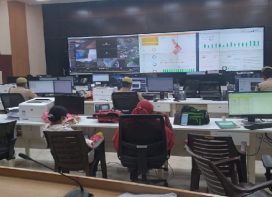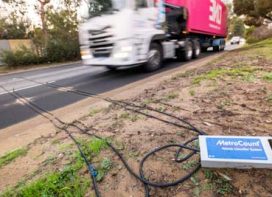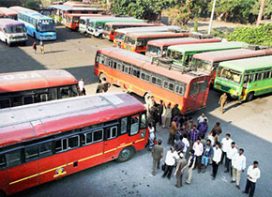You have over 4500 buses and 300 AC buses. Why can’t Mumbai, given its heat, have more AC buses?
It’s simple economics. AC buses cost a lot and people are not ready to pay the heavy prices. AC bus can only be successful when people think that travelling by bus is no more a private statement on your social status. People who are driving cars today should move to AC buses – technically. The pricing can be fixed reasonably then. In the cities, buses cannot drop each and every individual to their respective offices. Cars allow you that flexibility. City-walks are not available here. So, if you are coming by bus, you get dropped some place and then walk a few minutes to reach your office soaked in sweat and in disturbed attire. So, you won’t still like the AC buses. In most cities, bus stops terminate at major business centres. From there, you get air conditioned walkways. Sadly, our focus has never been in providing that kind of public transport.
Your drivers are qualified drivers but reckless, and endanger the public often. Don’t you think they need an orientation?
 The performance of BEST buses on the roads in terms of accident rates and other issues is very good. Since BEST bus is the biggest vehicle on the road and BEST a public body, if anything happens, it is seen quickly and highlighted by a very vocal media. There is a general indiscipline in traffic today. Yes, some of the BEST drivers who have been recruited in the last five or seven years have not been good for the simple reason that they have never had the legacy of the BEST as a system. They were recruited in difficult circumstances when there was a strike in BEST or there was a problem with the labour union and regular drivers were sacked. These drivers were brought in on a daily basis without training, without background check and without due orientation. So yes, around 20% of these drivers in the current fleet have led to a rise in terms of indiscipline of BEST drivers on the city roads.
The performance of BEST buses on the roads in terms of accident rates and other issues is very good. Since BEST bus is the biggest vehicle on the road and BEST a public body, if anything happens, it is seen quickly and highlighted by a very vocal media. There is a general indiscipline in traffic today. Yes, some of the BEST drivers who have been recruited in the last five or seven years have not been good for the simple reason that they have never had the legacy of the BEST as a system. They were recruited in difficult circumstances when there was a strike in BEST or there was a problem with the labour union and regular drivers were sacked. These drivers were brought in on a daily basis without training, without background check and without due orientation. So yes, around 20% of these drivers in the current fleet have led to a rise in terms of indiscipline of BEST drivers on the city roads.
Cleanliness of BEST buses is a major issue.
All buses are cleaned every day in the depot when they come back in the evening. Yes, there have been certain issues because there was a shortage of cleaners and manpower since the fleet grew almost by 25% overnight – without adequate expansion in the infrastructure facilities. In the last two-three years after 1000 extra buses were purchased, there might have been stray incidents. But we are correcting it. Today we do not have adequate resources to handle the work load of extra buses. As a policy, the system is that every bus, once it finishes the day’s routine, goes back to its depot, gets cleaned up, gets checked on every account and then only comes back on the road the next day.
Certain very good things are happening like your focus on stainless steel bus stops. But the stops display only the numbers of the buses and not the destinations leaving the passengers confused.
It is being done actually. We have started working on a Unified Passenger Information System (UPIS) and getting the required equipment fitted in all the buses. I have already tied up with an agency for the first part. Based on the GIS system, real-time information on the running time of each bus will be sent to a Control Centre at Wadala where it will be processed by our staff and then transmitted to the bus stop locations. The GIS equipment transmits the bus location every three seconds and each bus is identified. On the screen you can see the bus number, bus route and its location. And accordingly, the message is sent to  the Bus Stop’s Display Board through GPRS telling the passengers which bus of which number and which destination will arrive at the bus stop at what time. We will be able to go for a trial of the system in the next two to three months on one or two routes. Today, I can see 100 odd buses on my laptop sitting here in my office and know where they are running route-wise. We have already put equipment inside more than 150 buses. Total roll out of the system may take three years.
the Bus Stop’s Display Board through GPRS telling the passengers which bus of which number and which destination will arrive at the bus stop at what time. We will be able to go for a trial of the system in the next two to three months on one or two routes. Today, I can see 100 odd buses on my laptop sitting here in my office and know where they are running route-wise. We have already put equipment inside more than 150 buses. Total roll out of the system may take three years.
My problem is – I need to display these things at the bus stops but I do not have my own bus stops. The land of the bus stops is technically owned by MCGM (Mumnicipal Corporation of Greater Mumbai). Permissions are granted by Traffic Police and MCGM. So I have to take permissions and then tie up for all these issues. These things cost money and BEST doesn’t have money. So we have to find a model which generates revenue of its own. One of them is of course advertising. But to give advertising rights on a pole erected in a MCGM land and taking traffic police permission, creates serious issues.
Earlier people travelled by buses because they had no other mode of travel and no personal transport. Today they have moved to personal motor cycles and private vehicles. If public transport services are better than private transport and the so-called perception that only people of lower strata of society travel by buses is removed, people will begin moving from private vehicles to public transport. I won’t say the number of our passengers has declined. But it has not grown in terms of the population growth in Mumbai. But tomorrow, when the government policies become more focused and the government, as a matter of policy, tries to reduce the number of private vehicles on the roads, you will see BEST picking up again.
We have tied up with an agency for GIS system. All BEST buses are going to have cameras inside. My 2000 buses already have these cameras and all things are recorded and kept for 72 hours.
Any other initiative?
We have already replaced the old manual ticketing system with electronic ticketing system. All conductors carry one ticket issuing machine. We also have the RFID card pass system. We provide daily, monthly, quarterly card passes. We will integrate these with other agencies like Metro and Monorail as and when they come. Our endeavour is to make people go in for these passes. Ten lakh people already have these card passes which can be recharged online. We sms them the reminder when their cards are about to expire. As and when you travel, you just have to show the card to the conductor, he will tap it on the machine and it gets reloaded.
What in brief can you say are your challenges?
My biggest challenge is to put the finances in order. This undertaking, in the last eight years, has accumulated losses of more than 3000 crore. Almost 2000 crore is debt which is working capital too. So that’s a roll-over money. This results in interest outflow of more than 100 crore every year. Finances are in a real mess. And my last two years have been focused basically to put that back in order. I am really hopeful that by 2012-13 I should give the first break even year to BEST after 15 years. We don’t even have the money right now to take care of basic issues. Simultaneously, I want to improve the quality of bus services. The overnight increase of the fleet by 25% has affected us severely. My challenge is to put the entire fleet on its feet the way it was earlier.
I cannot do this overnight. I have to have the time frame of three years for doing this. In the two years that I have been here, we have brought the breakdown of buses from 120 a day to 90 a day. But it is still very high. I need to lower that despite the bad road conditions and other issues and it is a big challenge.
 TrafficInfraTech Magazine Linking People Places & Progress
TrafficInfraTech Magazine Linking People Places & Progress


